These are sweet, shortbread-style alfajores. Two buttery cookies filled with gooey dulce de leche (a caramel-like spread). We eat them year-round as they make great finger desserts for parties and festive occasions. Different from our traditional cornstarch alfajores, they're just as delicious and a great addition to the holiday cookie tray.
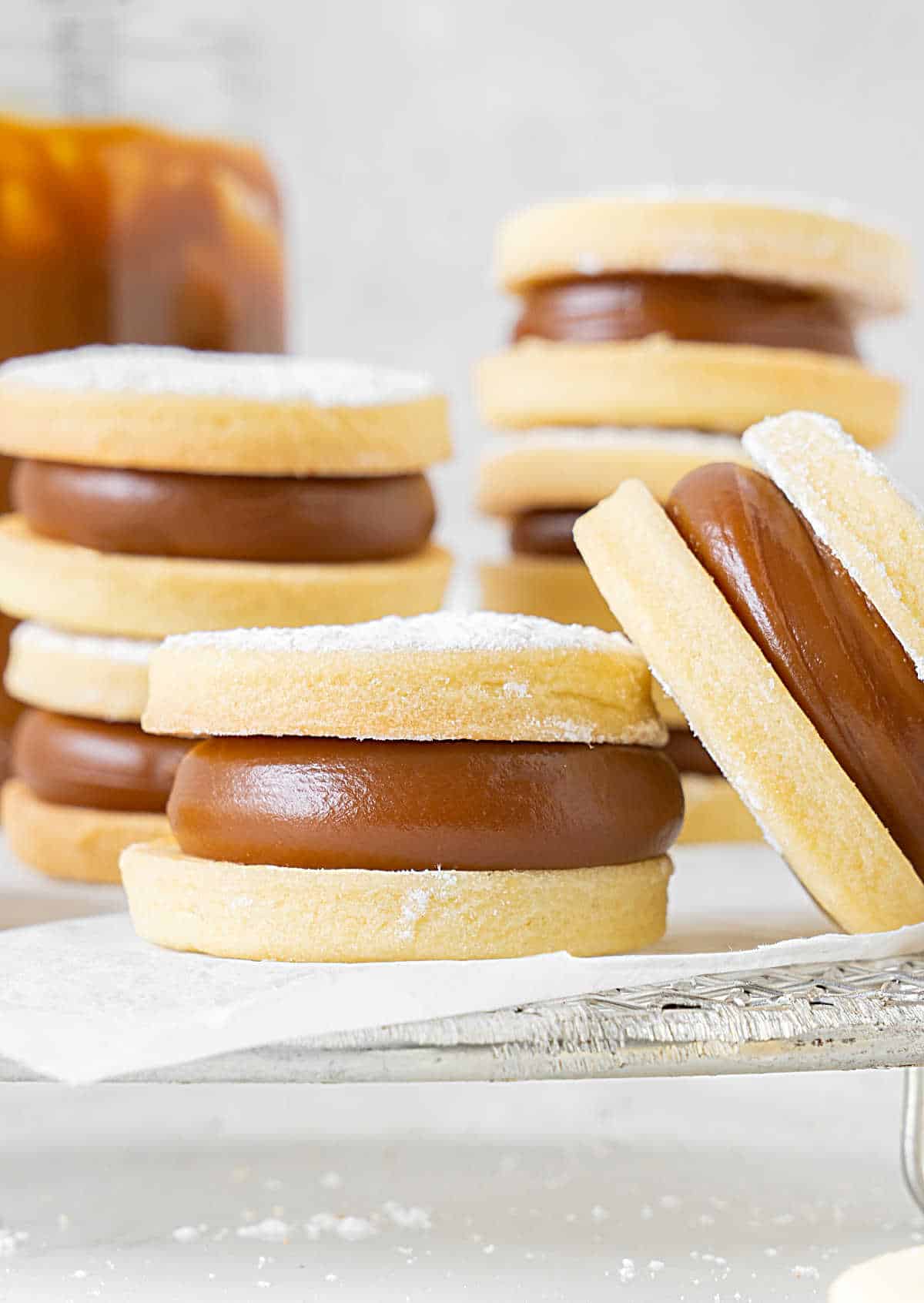
Alfajores can be found in many variations, including fillings, coatings, and shapes.
This is a variation that has been around for decades now but is not the most traditional. When someone says alfajores, they usually refer to chocolate-covered ones or cornstarch dulce de leche cookies.
They are meant to be small and are a staple with coffee, for tea parties and as a finger dessert.
What are alfajores?
I'm from Argentina and, as I told you in the post about walnut alfajores, we are the biggest consumers of these sweet snacks worldwide. You should see the aisle in the supermarket, it has more brands and varieties than you can imagine.
An alfajor (singular) is a sandwich made from two cookies with a filling in between. A sandwich cookie, or a wagon wheel with a different filling, depending on the type of alfajor.
Alfajores have a unique combination of textures and flavors. They are delicate yet rich, crumbly yet creamy, and sweet yet balanced.
They are very popular in South America, especially Argentina, Perú, and Uruguay.
ALL are filled with dulce de leche unless specified.
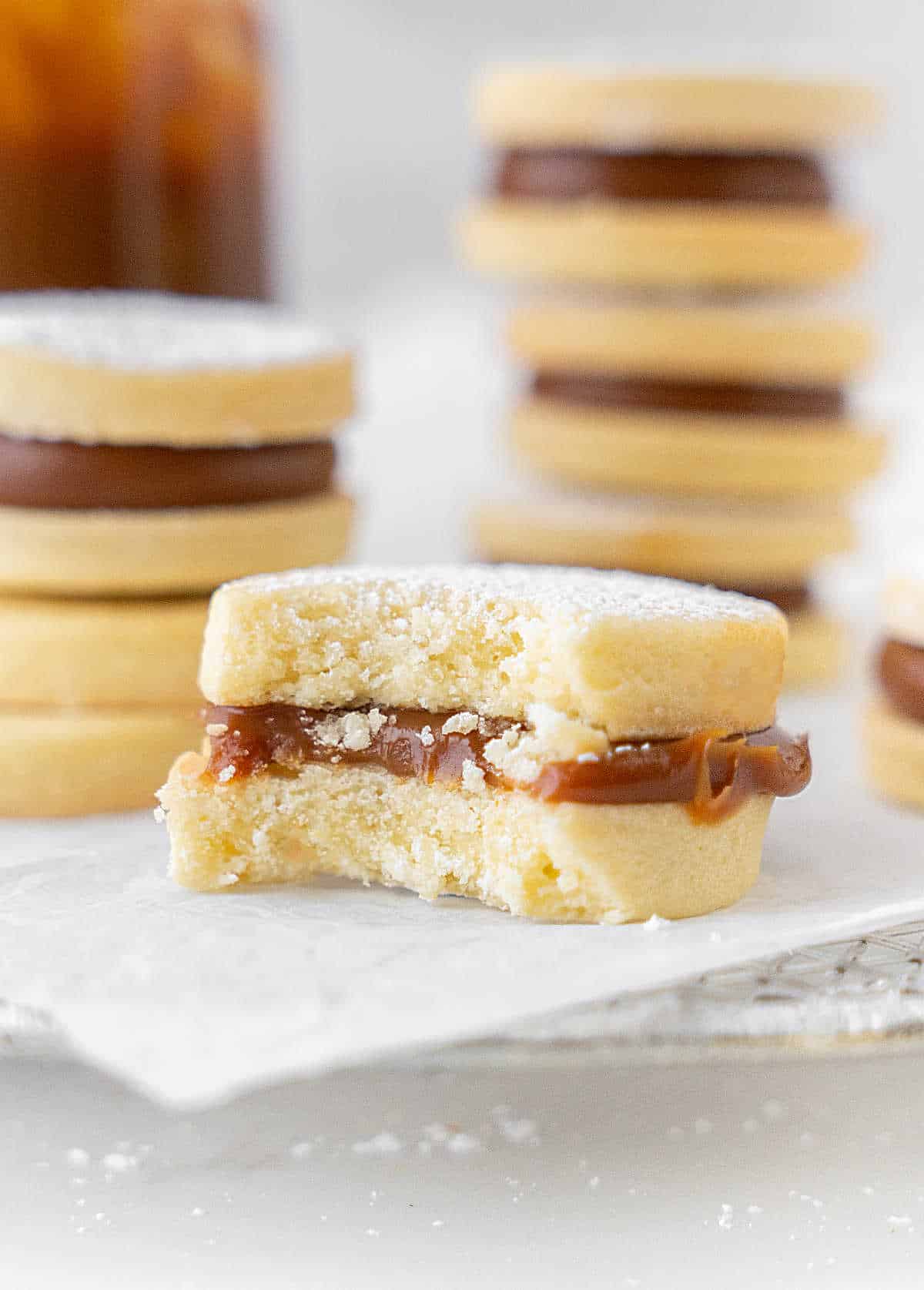
Ingredient list
- Unsalted butter.
- White granulated sugar.
- Egg.
- All-purpose flour.
- Baking powder: make sure it hasn't expired.
- Salt.
- Vanilla extract.
- Almond extract: optional.
- Dulce de leche: we're using it as a filling, so we need the thicker kind, like dulce de leche repostero Vacalin.
- Powdered sugar to dust before serving.
See the recipe card towards the end of this post for quantities. You can check the Ingredients page for more details and the brands we use.
How to make shortbread dough
- By hand: I use a large bowl and a whisk and a spatula. If the butter is soft, mixing everything is simple.
- Electric mixer: you can use a handheld mixer but make sure you use it at low speed. This is not a dough that needs beating or anything like it. If you use a stand mixer with the paddle attachment, mix at the lowest speed.
- Cookie cutters: I use a small round cutter, which is the traditional shape of an alfajor. The dough doesn't change much during baking, and the cookies will mostly keep their shape, so you can, technically, use other forms. Still, I recommend using simple patterns.
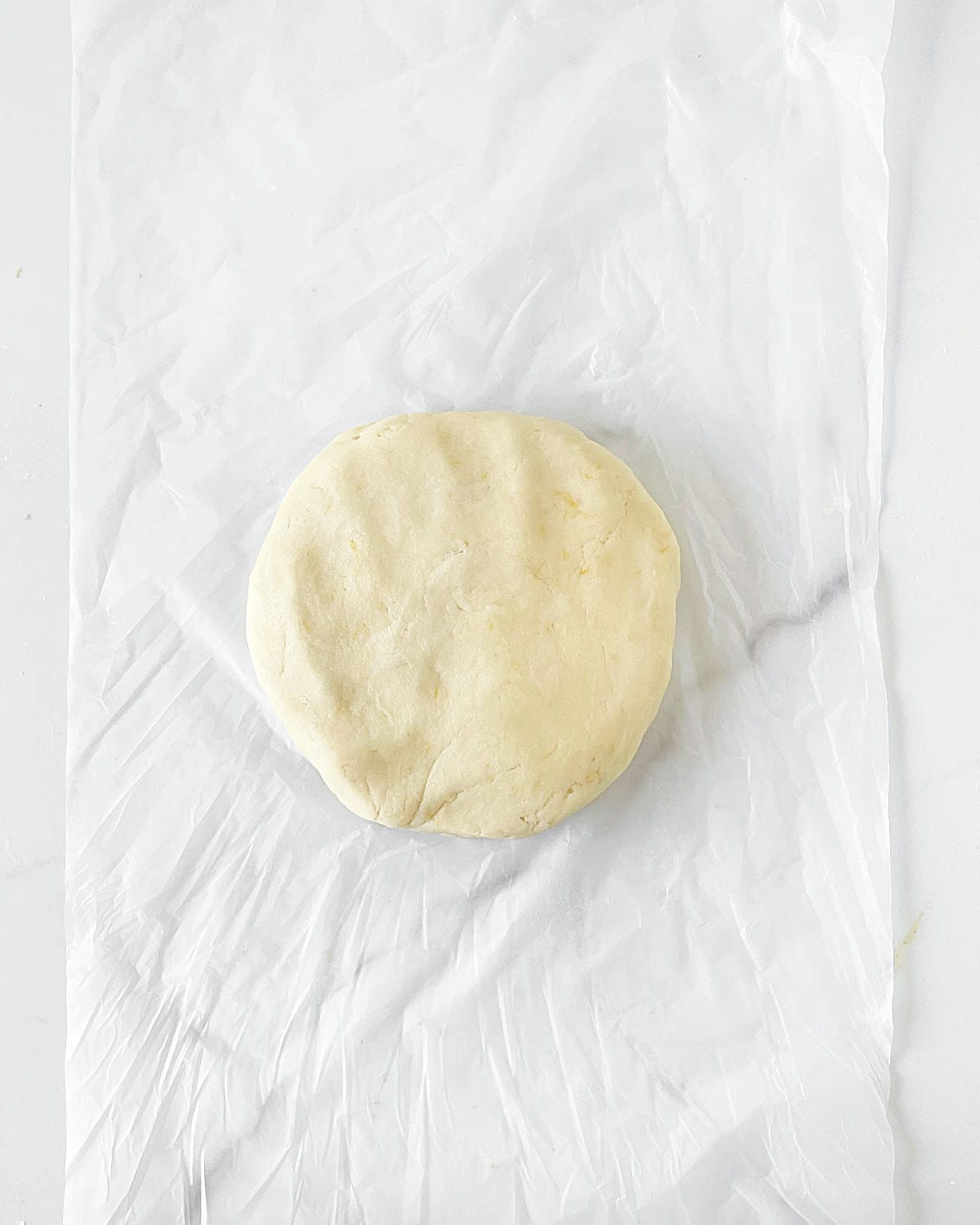
The final dough is soft to the touch and neither sticky nor dry. It needs to be refrigerated before rolling.
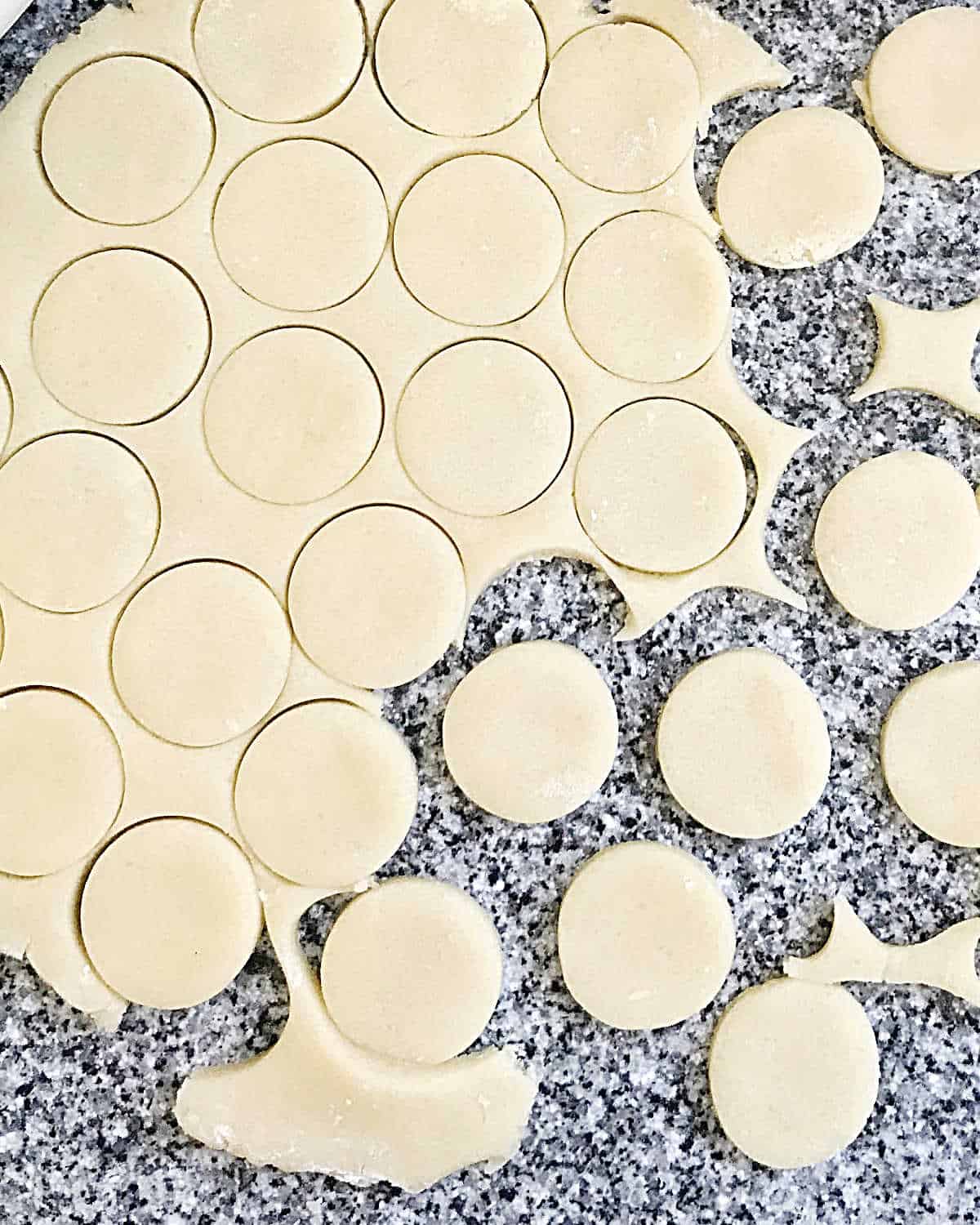
Roll dough in 2 parts as it's easier to keep it cool and to work with. If making alfajores for the first time, I recommend you roll thinner and thicker cookies (a few of each), bake them and see which ones you like the most.
- Preheated oven: always make sure it's on before you start rolling the dough. If you forgot, place the sheets in the fridge while the oven gets to the desired temperature.
- Preparing the cookie sheets: I use parchment paper or lightly buttered sheets, both work well.
- You should leave space between the rounds, but not much since the cookies won't expand a lot.
- These are light-colored, delicate cookies so bake until barely starting to color. Don't be tempted to bake them longer as they will be too crisp and won't soften as they should.
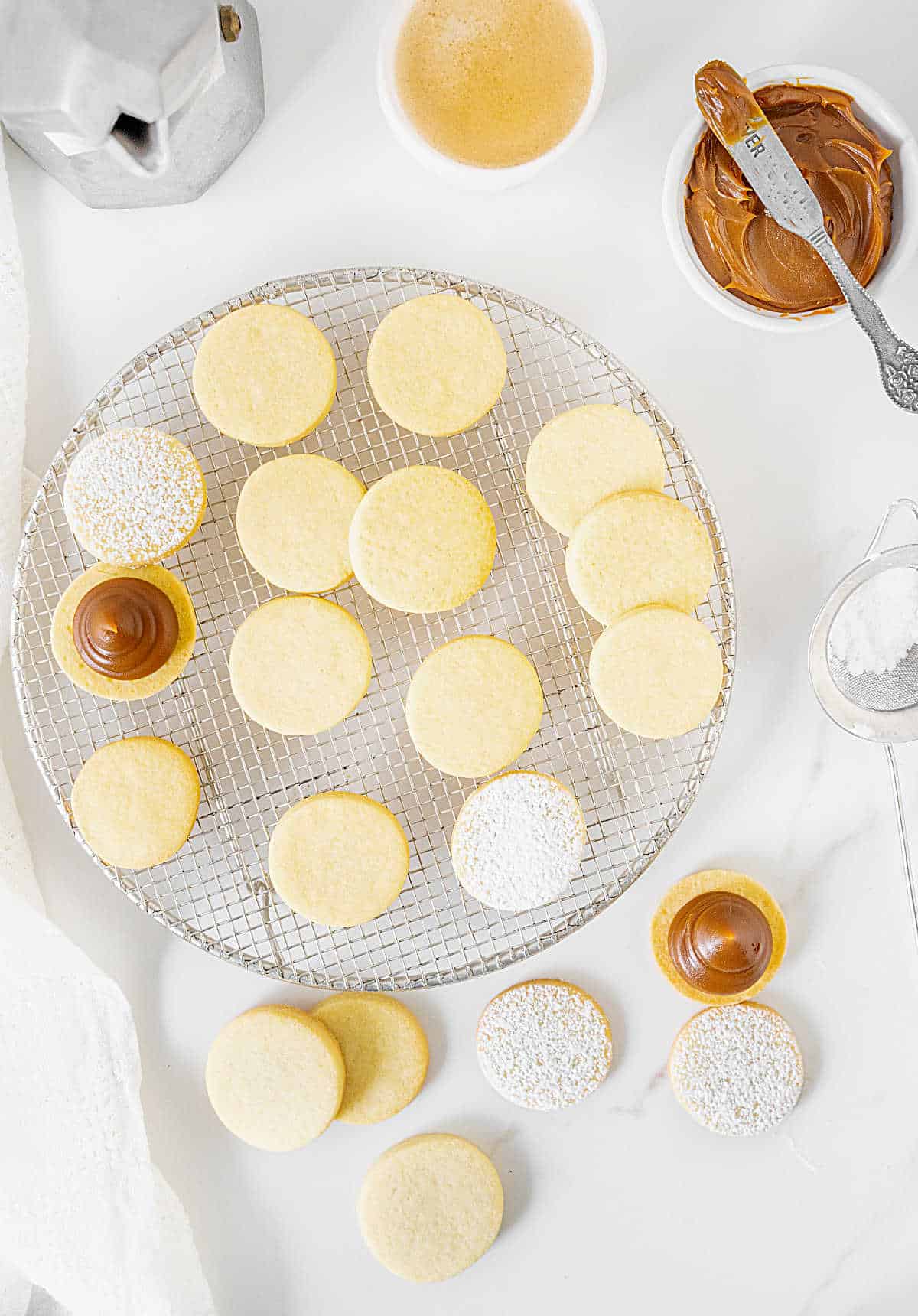
Dulce de leche filling
Dulce de leche is a sweet milk jam, a cousin to caramel, made with milk, sugar, and baking soda, the latter being accountable for its dark color.
It takes a few hours to make, and there are as many tips and tricks as grandmothers in this country. Each with its own recipe.
The flavor is very sweet, similar to caramel, but not quite. It does have a milk undertone, something that caramel lacks, and some might say it’s not as sophisticated, and they might be right. I’m a raving fan, so my opinion is biased.
We have many commercial brands and styles here, like peanut butter in the US, so we hardly make it at home.
IMPORTANT: for fillings, you need to use what we call pastry dulce de leche. It's much thicker than the regular kind. Look for the word Repostero on the label. The best one available online (that we also use here!) is Vacalin Dulce de Leche Repostero. Another good one is Veronica dulce de leche repostero. If you want to buy in bulk a great one is San Ignacio repostero (22 pounds) or Vacalin repostero (22 pounds).
Assembling the alfajores
The traditional filling was, is, and will always be dulce de leche.
- Piping bag: you can use it with a smooth, plain piping tip for a more even and neater filling, or use a teaspoon and get more of an irregular filling.
- Filling-cookie ratio: this is a fundamental part of an alfajor, and it's important that you find the one that you like the most. You can bake thinner or thicker cookie rounds and use a thinner or thicker layer of dulce de leche. Do a few tests first; that is my recommendation.
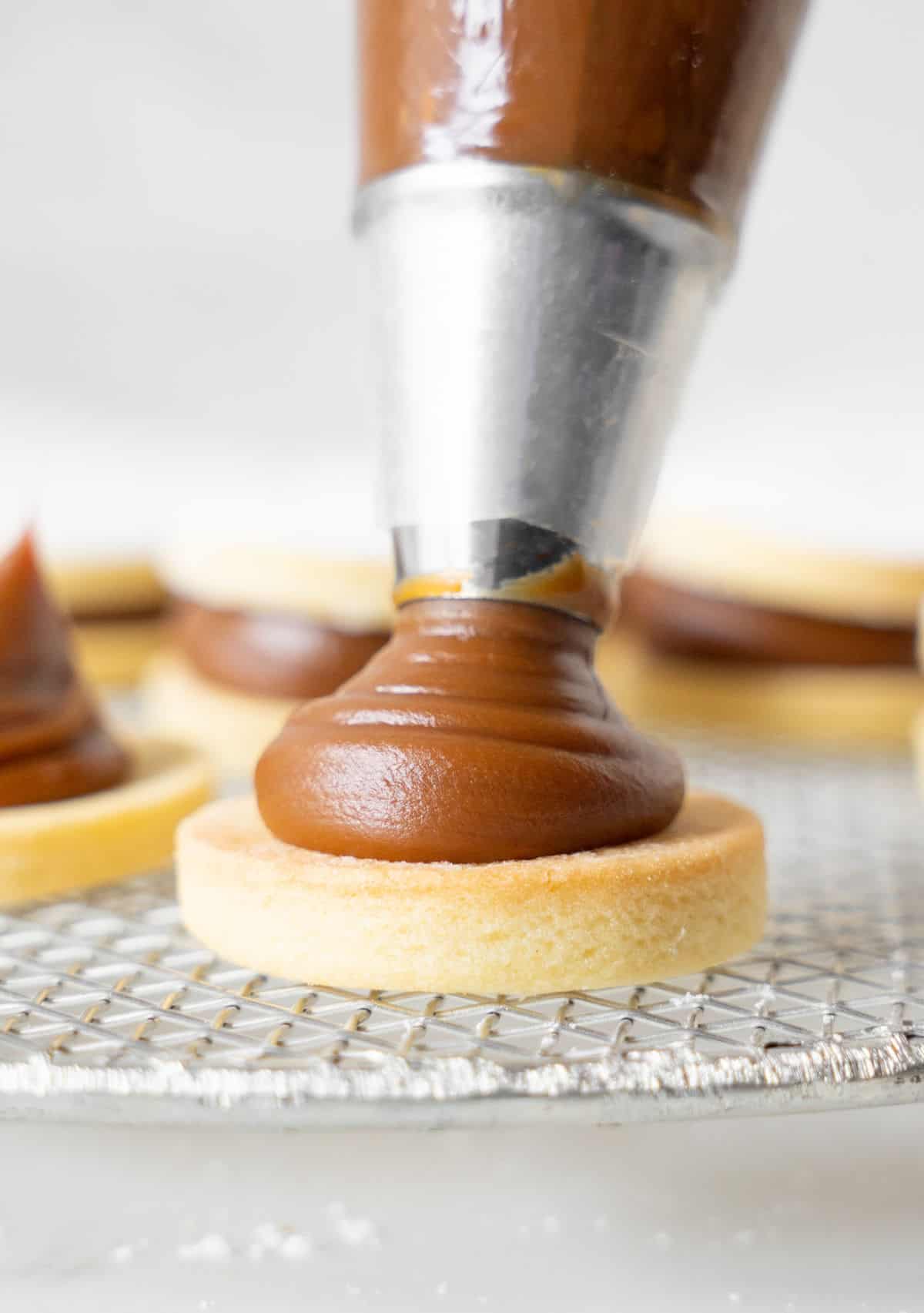
Kitchen notes
- Organization: read the recipe first and ensure you have ingredients at the correct temperature, equipment, and enough workspace. This will make the process so much easier.
- Baking time: keep in mind that all ovens and pans are different, even if they look similar. The baking time in my recipes is as accurate as it can be, but it might take you more or less time. You can use a thermometer(like the OXO oven thermometer) to check that your oven is at the right temperature. I recommend you keep track of how your oven works and what tiny details you might need to adjust.
- Make-ahead: as with most cookie doughs, it can be made ahead and kept for 4-5 days in the refrigerator or up to a month in the freezer. Always make sure you wrap it well in clingy plastic. Otherwise, the top layer will dry out.
- Storage: the cookies can be kept in an airtight container for about a week. Fill them several hours ahead of the time you're planning to eat them so they have time to soften a little. Take into account that the dulce de leche transfers moisture to the shortbread cookies and they will be softer when you bite into them.
- Eat them and be very happy.
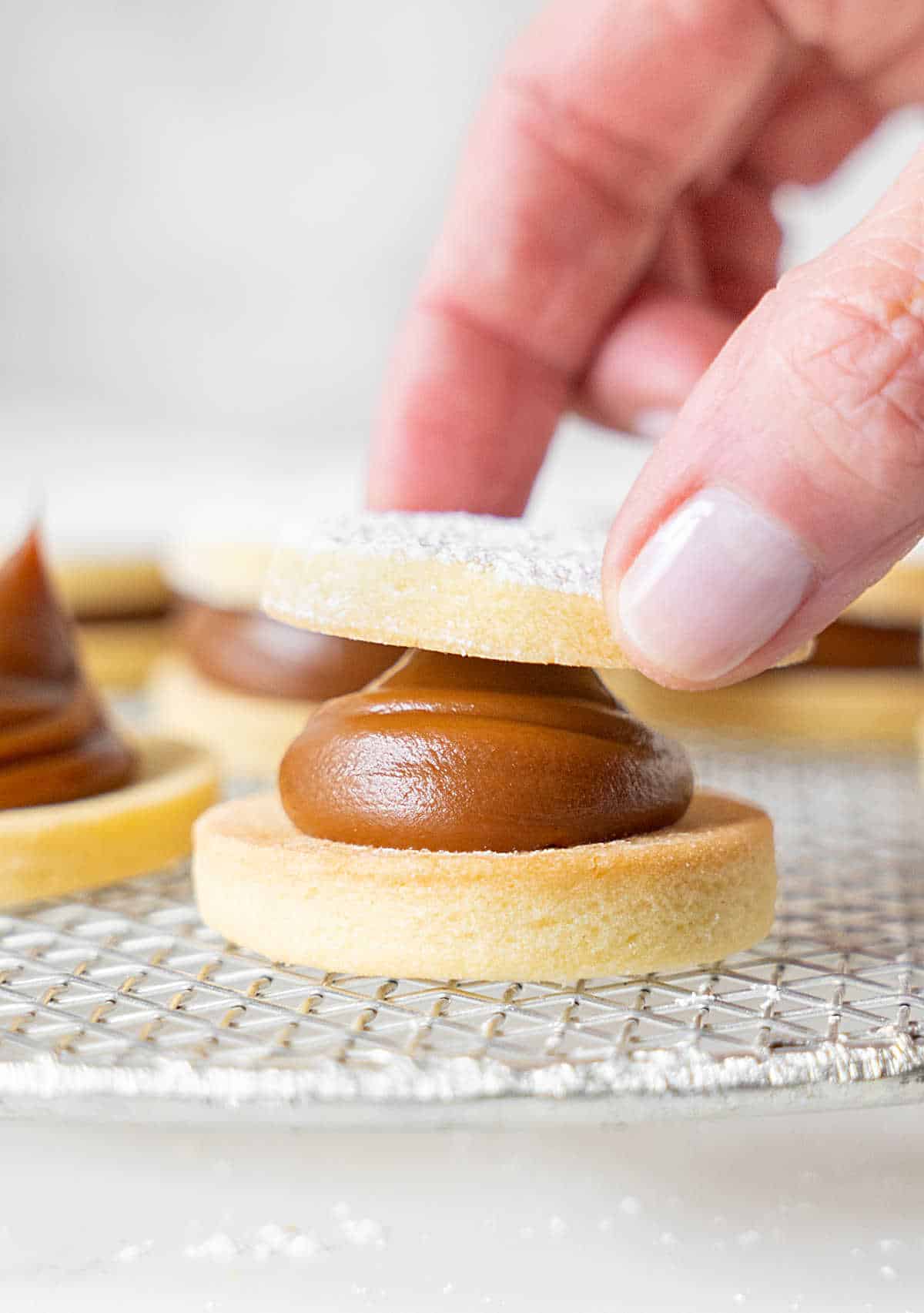
I sure do hope you try this recipe for shortbread alfajores.
It is easy and they are incredibly delicious. I imagine many of you never tried them, so trust me when I say the flavor is sweet but amazing and that they might become a favorite, fast.
Related recipes you might like:
Let me know in the comments below if you made this recipe and loved it and if you had issues so we can troubleshoot together. I love to hear what you think, always. Thanks for being here. It's much appreciated.
You might also consider subscribing to our FREE Baking the Best email series and our regular newsletter. Or connect via Facebook, Instagram, and Pinterest.
As an Amazon Associate, I earn from qualifying purchases. Please read my disclosure policy.
Print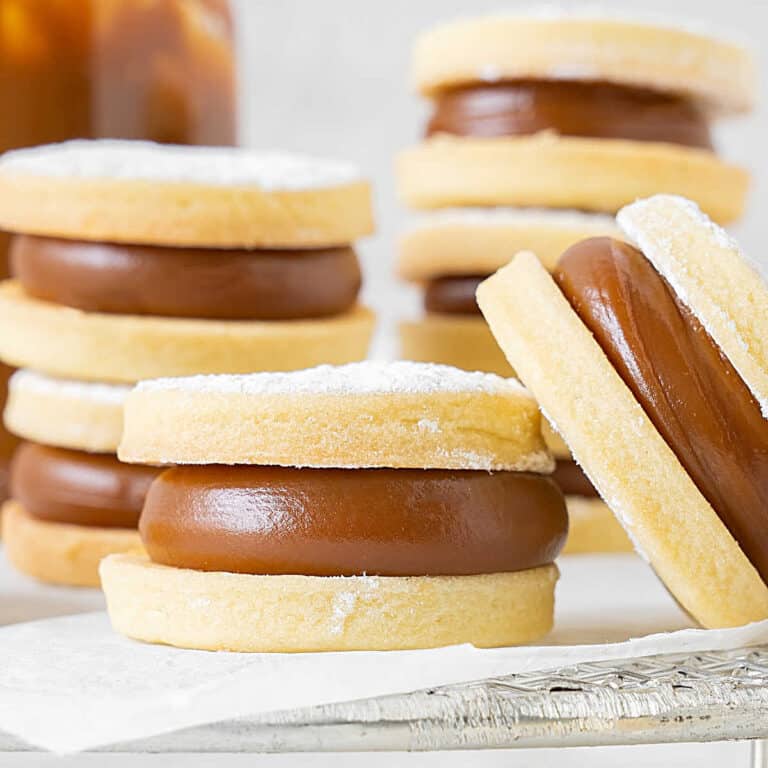
Dulce de Leche Cookies
These are sweet, shortbread-style alfajores. Two buttery cookies filled with gooey dulce de leche (a caramel-like spread). We eat them year-round as they make great finger desserts for parties and festive occasions. Different from our traditional cornstarch alfajores, they're just as delicious and a great addition to the holiday cookie tray.
- Total Time: 1 hour 25 minutes
- Yield: 25 filled cookies
Ingredients
- ¾ cup unsalted butter, at room temperature
- ¾ cup white granulated sugar
- 1 egg, at room temperature
- 1 teaspoon vanilla extract
- ¼ teaspoon almond extract (improves taste but is not traditional)
- 2 cups all-purpose flour
- ½ teaspoon baking powder
- ¼ teaspoon salt
- Dulce de leche for the filling
Instructions
- In a bowl, beat butter with sugar just until incorporated.
- Add the egg and extracts and beat for 1 minute.
- In 2 or 3 parts, add sifted flour, baking powder and salt. You can sift them before or have the ingredients measured and sift them directly over the butter mixture (my choice).
- It will be a soft but not sticky dough.
- Wrap it and chill it for several hours or overnight. It can be in the refrigerator for 2-3 days or frozen for a few weeks (defrost in the refrigerator the day before).
- When you are ready to bake the cookies, preheat the oven to 350°F/180ºC.
- Have baking sheets ready; no need to butter or line them with parchment paper, but you can.
- Roll the dough in 2 parts and leave the unused piece covered, in the refrigerator. You can use two large pieces of parchment paper or a lightly floured surface to roll the dough.
- I put the dough in the middle and roll it between the pieces of paper. The dough is cold but does not crack when stretched.
- Chill it again until cold, and and use a round cookie cutter to cut cookies. Dip the edge of the cutter in flour and shake the excess so the dough doesn’t stick to the cutter. These are meant to be small. I use a 1.18-inch (3cm) plain, round cookie cutter.
- Place them on the cookie sheet and bake for about 12 to 15 minutes, until they are dry and just beginning to color. It depends a lot on the thickness of the dough.
- Let them cool completely on a metal cooling rack.
- Fill half the cookies with a thick layer of dulce de leche. I like it to be as thick as the cookie.
- Dust the other half of the cookies with powdered sugar before placing them on top of the filling and pressing lightly to assemble the alfajores.
Notes
- Baking time: keep in mind that all ovens and pans are different, even if they look similar. The baking time in my recipes is as accurate as it can be, but it might take you more or less time. You can use a thermometer(like the OXO oven thermometer) to check that your oven is at the right temperature. I recommend you keep track of how your oven works and what tiny details you might need to adjust.
- Make-ahead: as with most cookie doughs, it can be made ahead and kept for 4-5 days in the refrigerator or up to a month in the freezer. Always make sure you wrap it well in clingy plastic. Otherwise, the top layer will dry out.
- Storage: the cookies can be kept in an airtight container for about a week. Fill them several hours ahead of the time you're planning to eat them so they have time to soften a little. Take into account that the dulce de leche transfers moisture to the shortbread cookies and they will be softer when you bite into them.
- Piping bag: you can use it with a smooth, plain piping tip for a more even and neater filling, or use a teaspoon and get more of an irregular filling.
- Filling-cookie ratio: this is a fundamental part of an alfajor, and it's important that you find the one that you like the most. You can bake thinner or thicker cookie rounds and use a thinner or thicker layer of dulce de leche. Do a few tests first; that is my recommendation.
- Prep Time: 15 minutes
- Refrigeration time: 1 hour
- Cook Time: 10 minutes
- Category: Cookies
- Method: Baking
- Cuisine: Argentinian


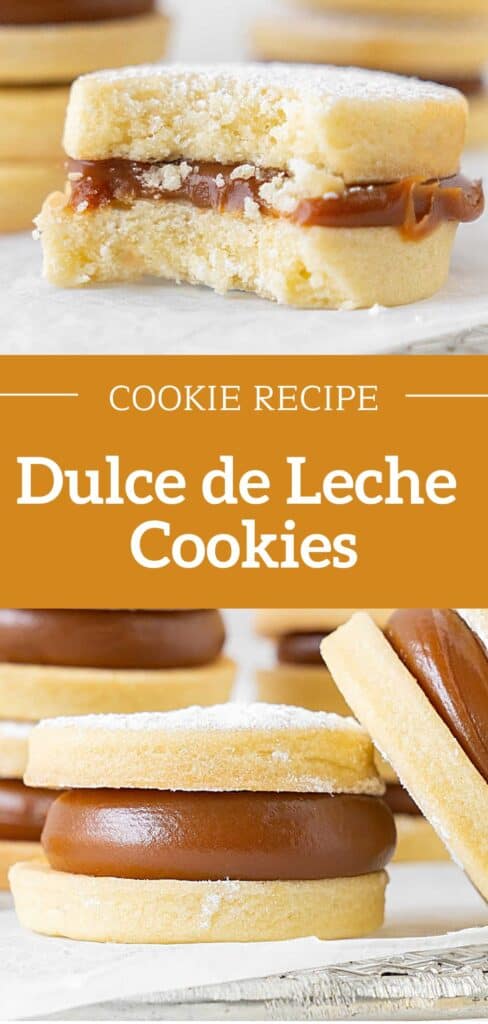
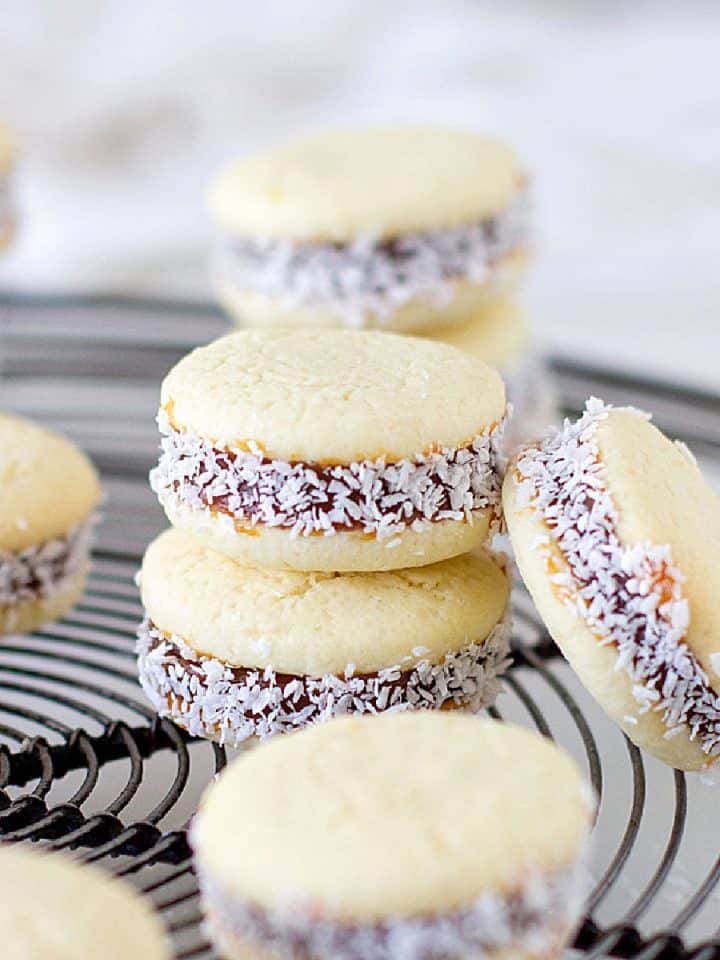
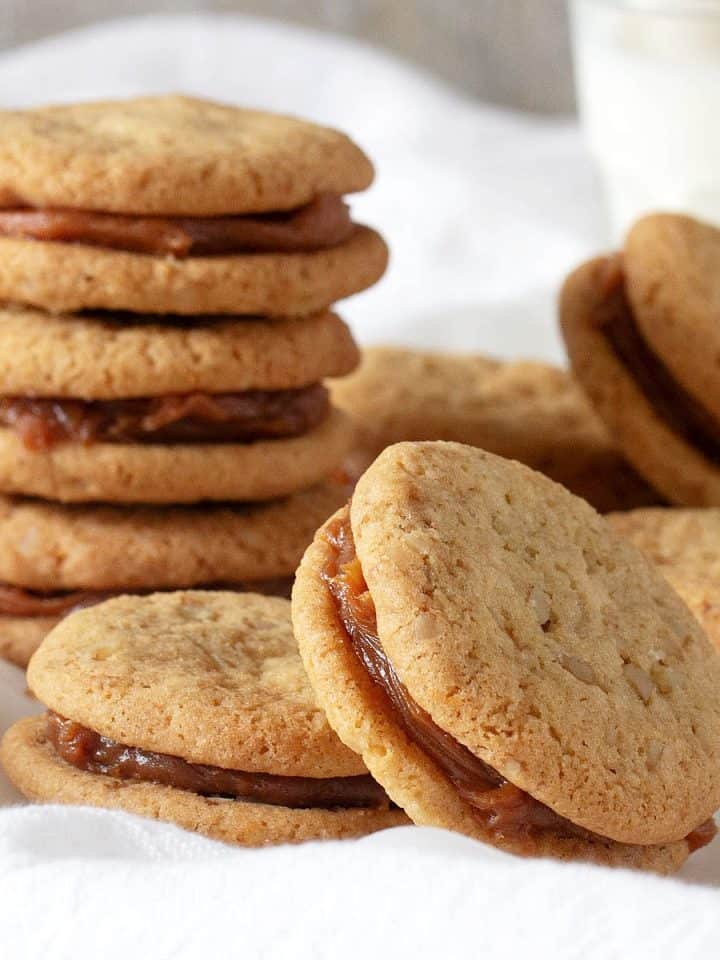
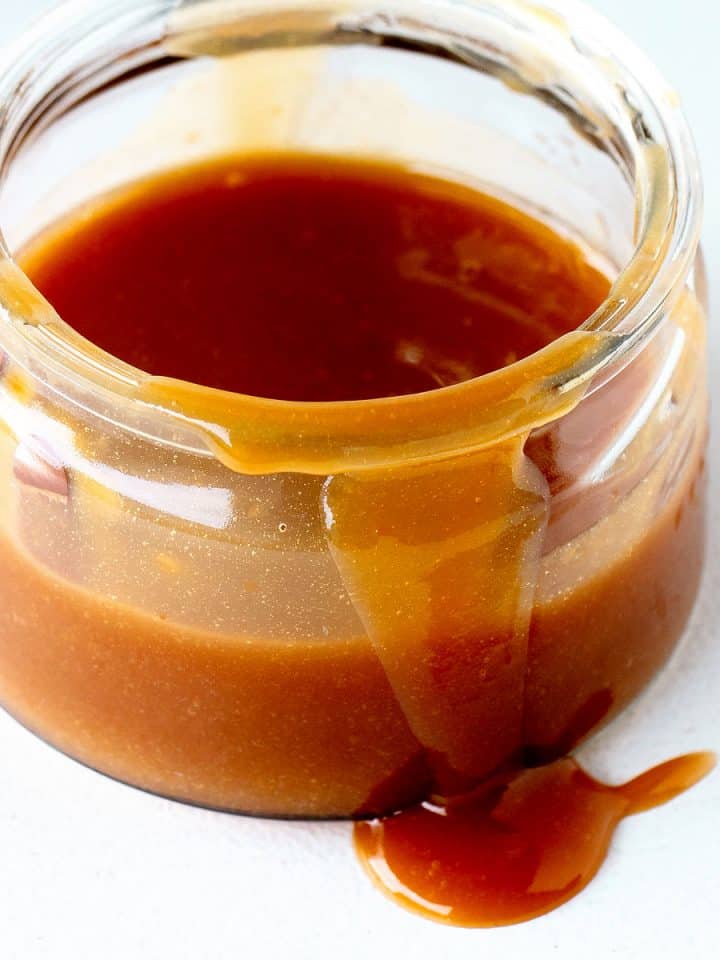
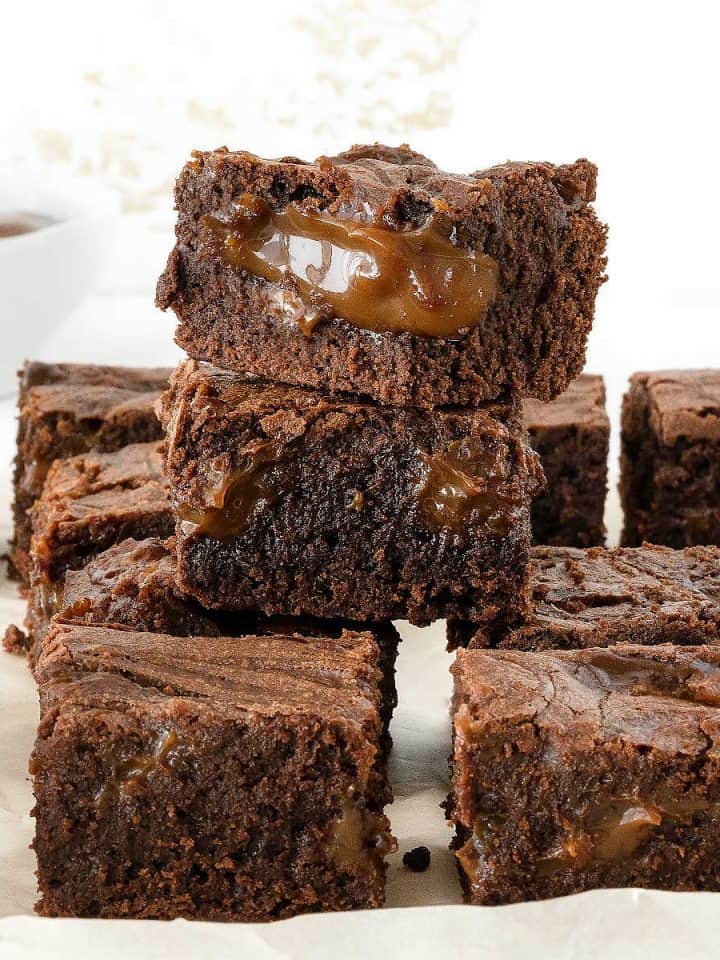
Caroline says
These are the best!
Charleen says
After following you for a long time & seeing your lovely recipes - I would love to make these! But using cup measurements does not give consistent results.
Is it not possible you can start posting with metric/weight measurments?
Paula Montenegro says
Hi Charleen, you have a button you can toggle to switch between US and metric.